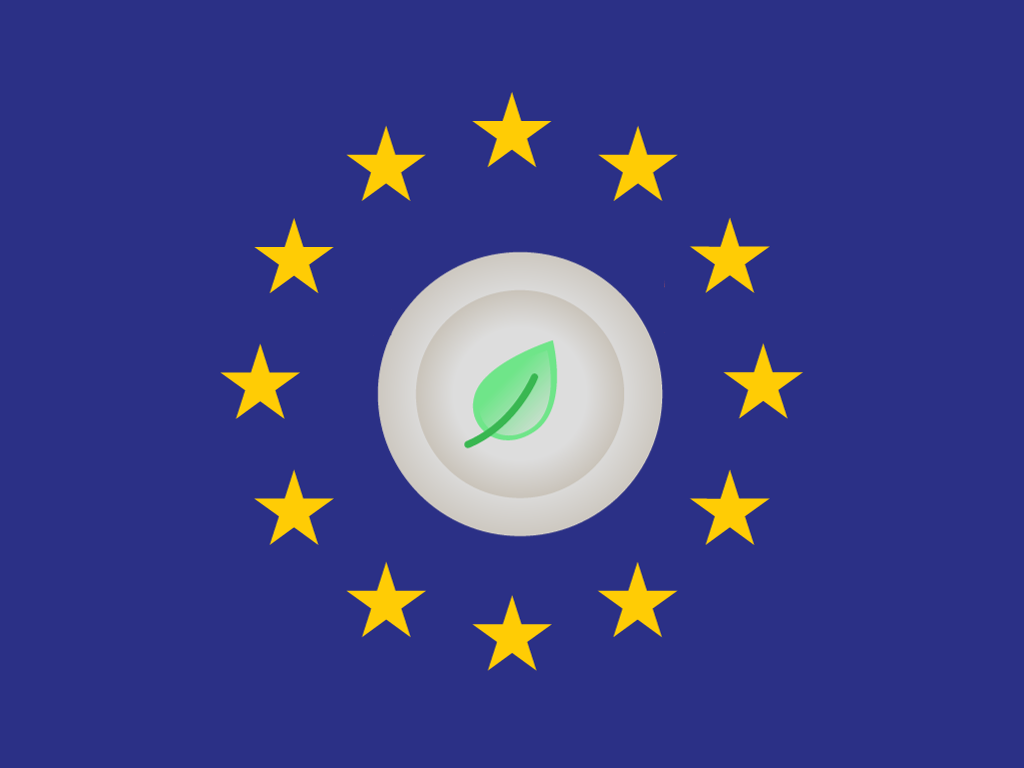EU Commits to Protein Diversification Strategy, But MEPs Push for More Action
6 Mins Read
The EU Commission has answered calls to create a protein diversification strategy; parliamentarians say more definitive action is needed.
After see-sawing on its commitments to a greener protein ecosystem, the EU has finally agreed to establish a plan to boost plant proteins, reduce imported feed, and promote sustainable solutions.
Agriculture commissioner Christophe Hansen faced calls from two parliamentarians to develop a protein diversification strategy, which they argued would make the EU’s food system more sustainable and self-sufficient.
In a letter led by Anna Strolenberg (Volt) and Sigrid Friis (Renew), 25 members of parliament pointed out how livestock farming accounts for 81-86% of agricultural emissions in the EU, outlining the “urgent need to rethink how we produce animal protein and to expand the production of plant-based proteins within the EU”.
“Farmers have already demonstrated their willingness to embrace sustainable practices, such as integrating animal and plant-based protein production and leveraging new technologies or production methods to reduce the environmental impact of livestock farming,” the letter read. “However, they need robust policies and targeted support to scale these efforts, ensure fair remuneration, and establish a thriving market for sustainable proteins.”
In response, Hansen noted that the Commission’s much-criticised agrifood vision committed to developing “a comprehensive plan to address the challenges that protein supply faces in the EU”.
Expanding on that for the first time, he said: “This initiative will be based on a holistic approach encompassing the agrifood system, considering both the way protein is produced and consumed. Learning from on-the-ground efforts and research, it will present a way forward to ensure the long-term competitiveness, sustainability, profitability and attractiveness of the sector.
“It will focus on fostering the domestic production to improve self-sufficiency to reduce the long-standing dependency on imported plant-based protein and on diversifying imports of plant-based protein to increase the EU food security.”
It’s a win for Friis and Strolenberg’s efforts, and the two don’t plan to stop here. “While we are encouraged by this outcome, we would have liked to see more concrete steps,” Strolenberg tells Green Queen when asked if this was a binding commitment. “What exactly will this comprehensive strategy include, according to the Commission? Moreover, there is still no timeline for when the strategy will be published.”

EU protein strategy should be built on three key elements
The EU’s latest vision for agriculture and food was supposed to take in the conclusions of the Strategic Dialogue on the Future of EU Agriculture, in which farmer lobby groups and climate activists advocated for an EU-wide action plan for plant-based foods.
Doctors, consumer groups, climate experts, and even some of the largest food companies urged the EU to include the outcomes in the food strategy, but to no avail. There were hints of this at Hansen’s confirmation hearing, when he called the Strategic Dialogue “a vague formulation” that needed more discussion in response to a question from Strolenberg.
“The Strategic Dialogue has rightly acknowledged the need for an action plan on plant-based foods,” Strolenberg says. “In our view, the announced strategy should make this a core pillar. A protein strategy that fails to address the role of plant-based foods would be a missed opportunity and a real disappointment.”
She calls Hansen’s latest letter “an important first step” that proves the Commission recognises the significance of the issue and “demonstrates a willingness to tackle both our protein dependency and the unsustainable nature of current protein sources”.
The strategy should be built on three key elements. First, a thorough problem analysis is needed. “How much protein do we import, and how much do we produce? What does our protein consumption pattern look like? What is the ratio between food and feed? What are the barriers and needs for alternative proteins?” she says.
Next, the plan must define concrete goals. “How much protein should we produce, and of what type? What does a sustainable and healthy protein consumption pattern look like?”
And finally, targeted policy initiatives should combine existing and new instruments to achieve these goals. “How will the Common Agriculture Policy [CAP], Horizon Europe, public procurement policies, and health policies be adapted?” wonders Strolenberg.

EU should derisk diversification, adjust VAT, and reform dietary guidelines
For Strolenberg, an ideal protein strategy should promote diversification across the value chain. “On the farm side, derisking and rewarding crop diversification is key. New crops and new methods of protein production require knowledge, flexibility, and space for farmers to experiment,” she says, highlighting the role of the CAP in providing farmers the financial stability to try and adopt new crops.
Developing the value chain itself is critical too. “Farmers often report a lack of demand, while processors further up the chain claim there isn’t enough production,” she says. “Bridging this gap by creating and investing in value chain connections is vital. Public procurement policies can also be used to create stable demand.”
She calls on Europe to invest significantly in new crops and technologies: “A dedicated fund for protein diversification could help bring innovative crops and production methods to market more quickly. An innovation cluster should be established to connect all relevant actors, identify research gaps, and foster collaboration.”
The European Food Safety Authority (EFSA), meanwhile, should be encouraged to fast-track the approval process for novel proteins, as this “currently represents a significant regulatory bottleneck”. The EU’s agrifood plan had identified the need for reinforcements at the EFSA to speed up safety assessments and clear regulatory bottlenecks.
“Healthy and sustainable options should be the most affordable. This can be achieved by adjusting VAT rates on healthy protein products,” Strolenberg says, echoing calls from environmental experts.
“Setting targets in cooperation with the retail sector can help ensure consumers have better access to healthy choices,” she adds. “Finally, the creation of European dietary guidelines would provide clear goals and standards to guide both policymakers and industry.”

Will the EU actually deliver on its promises?
Strolenberg says her advocacy won’t be limited to the agricultural committee- she says it will extend to the environmental, industry and public health committees aswell. “We will also keep engaging with the Commission and civil society to ensure that the announced strategy lives up to expectations,” she says.
The MEP points to Denmark as a leading example. The country was the first to publish a plant-based action plan back in 2023, supported by funding to boost both supply and demand. It will begin taxing cattle farmers for their emissions in 2030, another global first. “We hope that the Danish Presidency of the Council will give this topic additional momentum at the European level,” she adds.
The EU has a history of giving in to lobby pressure and flip-flopping on its own climate proposals, including several aspects of the Green Deal. MEPs have managed to stall Farm to Fork reforms and delay the promised ban on caged farming, which has now been put on hold indefinitely and led to a legal complaint against the EU. The CAP’s environmental controls were further weakened last year after intense lobbying efforts.
Most recently, the Commission was set to unveil a sustainable food systems framework to support the protein transition at the end of its previous mandate, but ended up abandoning the plan after backlash from interest groups.
Are Strolenberg and her colleagues confident that the EU will deliver real, lasting change this time? “We believe there is real momentum to take further steps. The Strategic Dialogue has clearly shown that there is strong societal demand,” she says.
“The upcoming CAP reform also presents an opportunity to introduce instruments that support farmers in adopting new protein crops. This can help derisk investments in new production methods and crops. If the strategy also includes measures to develop value chains and expand consumer choices, we believe it has the potential to become a real success.”



